We believe people deserve great digital experiences. However, producing digital customer experiences at larger organizations often involves challenges concerning scaling internal operations and collaboration. Content Hubs and Design Systems are two complementary tools which can help in this area. In this blog post, we want to recap what they are and how they can enable seamless customer experiences.

Image: Dell
Before we dive into building customer experiences, let’s recap what we define as “a great customer experience”. Customer experience is influenced by every interaction happening between the customer and the organization alongside the customer journey.

To contribute to a seamless overall experience, these interactions should:
To achieve this, we see that content has become an essential part of the customer journey. It’s used to communicate your brand mission and values and interact with your audience in a clear way.

The importance of content has rapidly increased over the years. So much that is has become a strategic asset for customer-centric organizations. Because of this, we believe that content deserves to live in what we like to call a “Content Hub”: a go-to place for all content in your organization.
How can a “Content Hub” help you? Its main goals are to facilitate efficient teamwork across potential organizational silos and to prevent content fragmentation. The hub not only serves as storage, but also provides tools and processes to work efficiently with content across its lifecycle. This starts with initial content creation up until content delivery and archiving.

The need for Content Hubs increases dramatically when working with personalized customer experiences, for which content volume is much higher and time-to-market is essential. It’s useful even to the most extreme use case in which personalization is done in real-time, since AI-based automations are in dire need for a Content Hub.
However, content isn’t everything. Great design is a second essential ingredient of a great customer experience. In this case, we mean design in a broad sense: not only what the experience looks like, but more importantly how it works. We believe a Design System is the ideal vehicle to centralize all design efforts of an organization in a single comprehensive tool.

The main purpose of a Design System is for larger teams to collaborate on the creation, maintenance, and usage of the Design System to produce customer experiences cost-effectively and at a rapid pace.
The resemblance between Content Hubs and Design Systems is striking: they both serve as a single source-of-truth in their own respect and serve the same goals for the most part: increased efficiently & collaboration, higher consistency, reducing operational costs, increased productivity and lower time-to-market. This makes both key enablers for producing great customer experiences at scale, working in a complementary way.
At AmeXio, we lay the groundwork for our CX projects by applying a holistic approach, combining both Content Hubs and Design Systems by deeply integrating them using Adobe’s DXP offering (Adobe Experience Cloud). Doing so, we consider people, processes, and technology. This means we ensure optimal adoption, use and advocacy of the technology at our clients. For this, a solid roadmap is essential, both from a CX perspective as well as a technology perspective. This translates to concrete KPIs to be defined, aligned with the broader vision of the organization, and an investment in robust and stable technology which is broadly supported in the market and fits well within the client’s technology landscape.